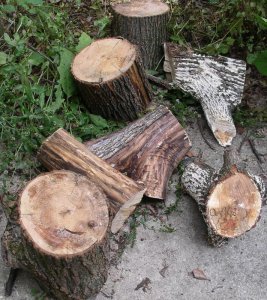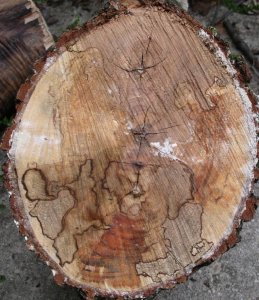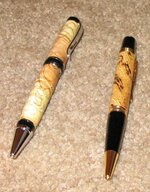Some pics of the wood would help but, if the wood is already spalted that means that is not totally green and that many of the wood cells have surpassed the dry stage to the "decomposition" stage, which is the spalting.
Depending on the amount of wood you got out of it, I would process a log or two now and seal the ends of the other logs with acrylic paint or proper wood sealant.
If the logs are already cut, seal the ends and put them out of the weather if possible, otherwise using a wood pallet outside as a base and a tarpaulin as cover, will be ok to be kept outside, preferentially under a tree (shade).
If the logs aren't cut to size, leave then as long as you can handle and seal the ends. The more pieces you cut out of a log and leave then sealed to dry the more wood you will lose from the log ends as the wood will crack at least a couple of inches from each end of the log, regardless of length.
If you are keeping some of that wood for making bowls and things like that, cut the logs 4 inches longer (at least) than its diameter, slice then in half, seal the ends and put them to dry.
If you want to process some of that wood for use ASAP, you will need to slice it all up into the blank types you want, (pens, bottle stoppers or others) just cut then slightly oversized (couple of mm or so) counting for shrinkage and a little wobble.
After you have your blanks cut to size, wax the ends (end-grain) and rack them on top of each other with some space in between, put some weigh on top of them or strap them wire or packing strap to reduce the wood movement as it dries.
Check its weigh (blank or full rapped bundle) or measure its MC (moisture content) until they are dry(ish) to dry, most woods are "workable" within 6 months from this process procedure, yours being already spalted, will be ready well before that...!
The drying time will depend of many factors, the wood species firstly, and the condition to which those process blanks or logs are exposed to. Weather conditions have a major role in the drying process, hot Summer weather will dry wood a lot faster the humid, cold weather (Winter) however, the "milder" the conditions (temperature), the longer will take to dry but generally, less cracks tend to develop in a slow and well controlled environment...!
I hope this is of some help to you and if you have any questions, don't hesitate to ask me...!:wink:
Cheers
George



